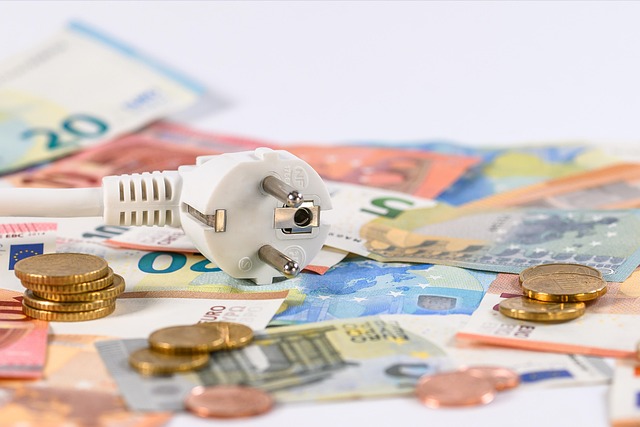Everyday Habits That Raise Electricity and Gas Bills
Understanding How Daily Habits Can Affect Your Energy Costs. Small, routine actions—such as appliance use, heating settings, or water usage—can contribute to higher electricity and gas bills over time. This article explores common household behaviors that may influence energy consumption and offers tips to help manage usage more efficiently.

Everyday Habits That Raise Electricity and Gas Bills
High energy bills often stem from unconscious daily routines rather than major appliances or seasonal usage spikes. Canadian families frequently overlook how small actions throughout the day compound into significant monthly expenses. Identifying these energy-draining habits represents the first step toward achieving substantial cost reductions without sacrificing comfort or convenience.
How to Reduce Electricity Bills Through Appliance Management
Standby power consumption, often called “phantom load,” accounts for 5-10% of residential electricity usage. Electronics like televisions, gaming consoles, coffee makers, and computer peripherals continue drawing power even when turned off. A typical household might have 20-40 devices in standby mode simultaneously, collectively consuming 50-100 watts continuously.
Charging devices overnight or leaving chargers plugged in without connected devices also contributes to unnecessary consumption. Modern smartphone chargers draw minimal power when idle, but older laptop adapters and tablet chargers can consume 2-5 watts continuously. Unplugging these devices or using power strips with switches eliminates this waste entirely.
Top Home Energy Efficiency Tips for Heating and Cooling
Thermostat management significantly impacts both electricity and gas bills. Setting temperatures too high in winter or too low in summer forces HVAC systems to work harder. Each degree of adjustment can change heating costs by 6-8% annually. Many households also heat or cool unoccupied rooms, wasting energy on spaces that don’t require climate control.
Blocking vents with furniture or closing doors while running central air systems creates pressure imbalances that reduce efficiency. Similarly, running exhaust fans longer than necessary removes conditioned air from the home. A bathroom fan should operate for 15-20 minutes after showering, not continuously throughout the day.
Energy Saving Tips for Water Heating Systems
Water heating represents 15-25% of home energy consumption in Canada. Taking excessively long showers, using hot water for tasks that don’t require it, and maintaining water heater temperatures above necessary levels all increase costs substantially. A 10-minute shower typically uses 25-50 gallons of hot water, depending on flow rate.
Leaving hot water taps slightly open creates continuous demand on water heaters. Even a small drip can waste hundreds of gallons monthly while forcing the system to maintain temperature constantly. Washing clothes in hot water when cold water suffices also unnecessarily increases both electricity and gas consumption.
How to Reduce Electricity Consumption Through Lighting Habits
Lighting accounts for approximately 10% of residential electricity usage. Leaving lights on in unoccupied rooms, using incandescent bulbs instead of LED alternatives, and over-illuminating spaces all contribute to higher bills. A single 60-watt incandescent bulb left on for 8 hours daily costs approximately $15-20 annually, while an equivalent LED costs $2-3.
Using task lighting instead of overhead fixtures for activities like reading or cooking reduces consumption significantly. Many households illuminate entire rooms when focused lighting would suffice. Additionally, relying on artificial lighting during daylight hours instead of maximizing natural light represents a missed efficiency opportunity.
Kitchen and Laundry Energy Waste Patterns
Kitchen appliances often operate inefficiently due to poor usage habits. Opening oven doors frequently during cooking releases heat and extends cooking times. Similarly, running dishwashers or washing machines with partial loads wastes energy and water. A full dishwasher load uses the same energy as a half-full load but cleans twice as many items.
Using the wrong burner size for cookware forces stoves to work harder. A small pot on a large burner wastes heat, while oversized cookware on small burners extends cooking times. Preheating ovens longer than necessary and using the oven for small portions that could be prepared in toaster ovens or microwaves also increases consumption unnecessarily.
| Energy Efficiency Measure | Potential Annual Savings | Implementation Cost | Payback Period |
|---|---|---|---|
| LED Bulb Replacement | $50-$150 | $100-$200 | 1-2 years |
| Smart Thermostat | $100-$300 | $150-$400 | 1-3 years |
| Power Strip Usage | $25-$75 | $20-$60 | 3-6 months |
| Water Heater Insulation | $50-$100 | $30-$80 | 6-12 months |
| Weather Stripping | $75-$200 | $50-$150 | 6-18 months |
Prices, rates, or cost estimates mentioned in this article are based on the latest available information but may change over time. Independent research is advised before making financial decisions.
Recognizing and modifying energy-wasting habits requires consistent attention but delivers measurable financial benefits. Small changes in daily routines, combined with strategic efficiency improvements, can reduce utility bills by 15-30% annually. The key lies in understanding how seemingly minor actions accumulate into significant costs over time and taking deliberate steps to eliminate wasteful practices.




